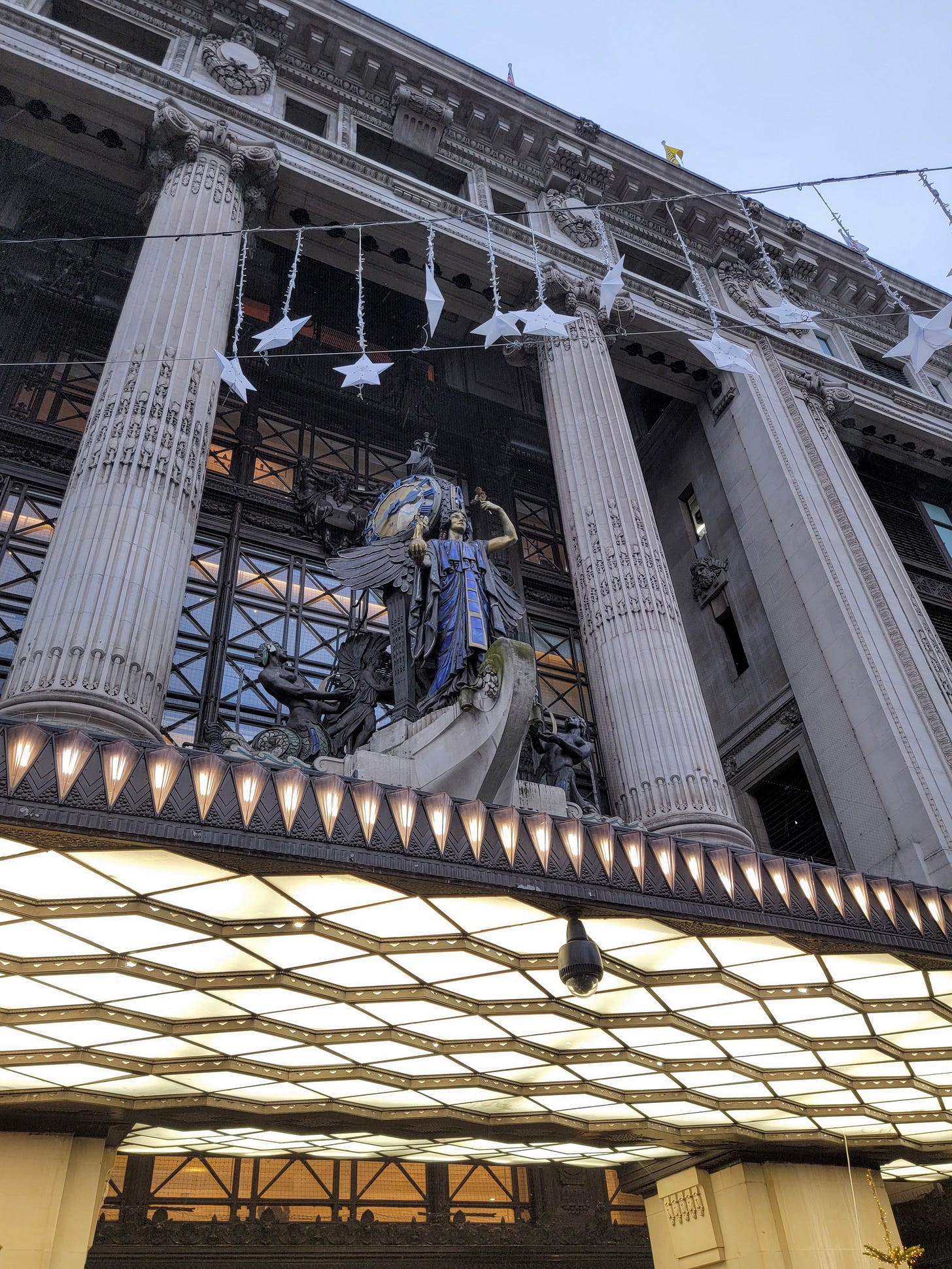For 2 months, Chicago was home to the 1st Selfridges in the world
The retail version of taking your ball and going home
Author note: next week I’ll be speaking about Living Landmarks of Chicago at the Mensa Annual Gathering! Get the book that inspired my invitation to speak.
“Mile-a-minute Harry” Selfridge was a retailing wunderkind. A mere twenty-one years-old when Marshall Field hired him as a stock boy in 1879, in four years he moved to retail and in eight years was promoted to General Manager.
Marshall implemented Harry’s ideas, from installing electric lighting to make the items for sale look better to moving displays out of the glass cabinets and onto tables where people could touch the merchandise. He instituted annual sales and turned the basement into the Budget Floor. During his tenure the departments increased from forty-two in 1884 to more than one hundred by 1902.
One of Harry’s biggest innovations was adding in-store dining. In 1890, the elegant Tea Room opened. This brilliant concept meant patrons didn’t have to leave when they got hungry and fostered generations of “ladies who lunch.” Just two years after the Tea Room opened, twelve hundred people a day dined in the department store. The Walnut Room, which opened in 1905, is still an annual Chicago holiday tradition for thousands—thousands who browse, eat, and often, buy.
Harry also began the famous Marshall Field window displays. He’d heard of a store in Iowa that used their windows to draw attention instead of stuff them full of merchandise. Harry grabbed the designer, brought him back to Chicago, and put him to work.
Crowds would gather around the windows every day but Sunday. Because Marshall believed in six days of labor and one day of rest, not only was the store closed on Sundays, but he also didn’t advertise in the newspaper. He was so serious about this he had curtains drawn on the store displays from Saturday evening until Monday morning.
With all of those contributions, Harry felt his name should be added to the company.
In 1904, he approached his boss and partner, Marshall Field. Marshall declined to give him his own store, so Harry decided to strike out on his own, and he took his $1.5-million settlement, added another $3.5-million, and bought David Mayer of Schlesinger & Mayer out on May 15.
On June 13, Schlesinger & Mayer officially became H. G. Selfridge & Co.
That lasted all of two months. Almost immediately, Harry realized that he didn’t want to take over someone else’s business; he wanted to start his own.
In one of the quickest turn-arounds ever, he sold the building and leaseholds to Otto Young, who leased the land from Marshall Field, and sold the store itself to Carson, Pirie, Scott & Co.
Today, that former Selfridges is the Sullivan Center.
Read more about the Sullivan Center and the irascible genius it’s named for.
Later this week we’ll hear about the child prodigy who traveled the young country on horseback at the ripe old age of 15.
Don’t want to wait? Get all of these tantalizing tales in Living Landmarks of Chicago, or upgrade your subscription to get a new story, with audio, delivered to your inbox each week.






